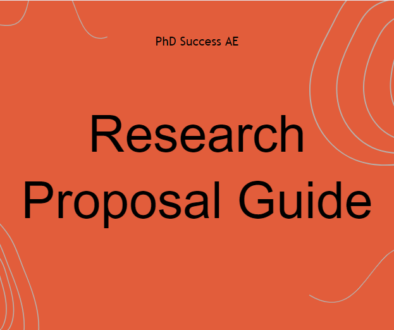This is how to get your PhD Thesis Introduction right
Your PhD thesis introduction is sufficient to determine whether you are a qualified PhD. Meaning, you have to get it right from the beginning; your outline and study ideas providing academic background, and rationale for your argument is critical. It can be daunting, we know.

It is general knowledge that, your PhD thesis introduction is the first chapter your focus should be on and the starting point when writing your paper. This implies that you are required to articulately describe the topic you intend to discuss in your thesis, talk briefly about the problem statement and write persuasive points based on an overview of your discussion to capture readers’ attention and persuade them to read on.
In the introduction of your thesis, you need to understand what types of information should be included. Depending on what you intend to say, you might have to use one or several essential steps as you craft each section of your thesis introduction. Here’s an overview of how to write an introduction chapter.
- Understand what the purpose and function of your introduction chapter is
- Write text that entices and engages in the opening section
- In brief, provide a background and context to the study
- Clearly define the research problem
- State your research aims, objectives and questions
- Give an explanation as to why your study is of significance
- Identify the limitations of your research
- Outline the structure of your dissertation
In a later discussion, we shall review in-depth The Process to writing a thesis introduction as getting this done right guarantees your paper will be further read; plus what information you should have included in your dissertation. Below, we begin with the literature review.
Review of Literature for Your PhD Thesis Introduction writing
What is a literature review?
A literature review is a piece of academic writing developed to demonstrate knowledge and show that you understand the academic literature on subject-specific topics placed in context. In writing your literature review, it also includes a critical evaluation of the available source of materials; this is why it is referred to as a literature review, not a literature report.
There are two main objectives of a literature review: firstly, the content covering existing research, theories and evidence and secondly, your own critical evaluation and discussion of this content which is to follow.
Usually, a literature review forms a section or part of a thesis, dissertation, research project or long essay. However, it can also be set and assessed as a standalone piece of work. Here is where the team at Writeright standby waiting to help you nail it.
What is the purpose of a literature review?
In Surviving your Dissertation, Rudestam and Newton (1992) clearly state that, “…your task is to build an argument, not a library.” In a larger piece of written work, such as a dissertation or project, a literature review is usually one of the first tasks carried out after deciding on a topic. Further, reading combined with critical analysis can help to refine a topic and frame research questions. A literature review establishes familiarity with and understanding of current research in a particular field before carrying out a new investigation. Conducting a literature review should enable you to find out what research has already been done and identify what is unknown within your topic.
In a literature review, it is good practice to:
- summarise and analyse previous research and theories;
- identify areas of controversy and contested claims;
- highlight any gaps that may exist in research to date.
Conducting a literature review
Focusing on different aspects of your literature review can be useful to help plan, develop, refine and write it.
Writing a literature review has a lot in common with other assignment tasks. There is advice on our other pages about thinking critically, reading strategies and academic writing. Our literature review top tips suggest some specific things you can do to help you submit a successful review.
As with any writing task, you will need to review, edit and rewrite sections of your literature review. The Editing and Proofreading page includes tips on how to do this and strategies for standing back and thinking about your structure and checking the flow of your argument. Putting all this in place requires composure, years of practice and knowledge that goes beyond writing a literature review.
The Methodology Step for Your PhD Dissertation
The Methodology section portrays the reasoning for the application of certain techniques and methods in the context of the study.
For your academic article, when you describe and explain your chosen methods it is very important to correlate them to your research questions and/or hypotheses. The description of the methods used should include enough details so that the study can be replicated by other Researchers, or at least repeated in a similar situation or framework.
Every stage of your research needs to be explained and justified with clear information on why you chose those particular methods, and how they help you answer your research question or purpose.
As the Authors, in this section you get to explain the rationale of your article for other Researchers. You should focus on answering the following questions:
- How did you collect the data or how did you generate the data?
- Which research methods did you use?
- Why did you choose these methods and techniques?
- How did you use these methods for analyzing the research question or problem?
The responses to these questions should be clear and precise, and the answers should be written in past tense.
First off, let’s establish the differences between research methods and research methodology.
Research Methods and Research Methodology
As an Academic and Author of valuable research papers, it’s important not to confuse these two terms.
Research Methodology Definition
Research Methodology refers the discussion regarding the specific methods chosen and used in a research paper. This discussion also encompasses the theoretical concepts that further provide information about the methods selection and application.
In other words, you should highlight how these theoretical concepts are connected with these methods in a larger knowledge framework and explain their relevance in examining the purpose, problem and questions of your study. Thus, the discussion that forms your academic article’s research methodology also incorporates an extensive literature review about similar methods, used by other Authors to examine a certain research subject.
Research Method Definition
A Research Method represents the technical steps involved in conducting the research. Details about the methods focus on characterizing and defining them, but also explaining your chosen techniques, and providing a full account on the procedures used for selecting, collecting and analyzing the data.
Important Tips for a Good Methodology Section
The methodology section is very important for the credibility of your article and for a professional academic writing style.
Data Collection Process
Readers, academics and other researchers need to know how the information used in your academic article was collected. The research methods used for collecting or generating data will influence the discoveries and, by extension, how you will interpret them and explain their contribution to general knowledge.
The most basic methods for data collection are:
Secondary data
Secondary data are data that have been previously collected or gathered for other purposes than the aim of the academic article’s study. This type of data is already available, in different forms, from a variety of sources.
Secondary data collection could lead to Internal or External secondary data research.
- Internal secondary data research
– particularly related to a company or organization, internal sources (such as sales data, financial data, operations-related data, etc.) can be easily attained and re-purposed to explore research questions about different aspects.
- External secondary data research
– represents a study that uses existing data on a certain research subject from government statistics, published market research reports from different organizations, international agencies (such as IMF, World Bank, etc.), and so on.
Primary data
Primary data represent data originated for the specific purpose of the study, with its research questions. The methods vary on how Authors and Researchers conduct an experiment, survey or study, but, in general, it uses a particular scientific method.
Primary data collection could lead to Quantitative and Qualitative research.
- Quantitative research
or empirical-analytical research focuses on a certain research purpose, with its complementary research questions and operational definitions of the variables to be measured. This type of study uses deductive reasoning and established theories as a foundation for the hypotheses that will be tested and explained.
- Qualitative research
or interpretative research focuses on analytically disclosing certain practices or behaviors, and then showing how these behaviors or practices can be grouped or clustered to lead to observable outcomes. This type of research is more subjective in nature, and requires careful interpretation of the variables.
Readers need to understand how the information was gathered or generated in a way that is consistent with research practices in a field of study. For instance, if you are using a multiple choice survey, the readers need to know which questionnaire items you have examined in your primary quantitative research. Similarly, if your academic article involves secondary data from FED or Eurostat it is important to mention the variables used in your study, their values, and their time-frame.
For primary research, that involve surveys, experiments or observations, for a valuable academic article, Authors should provide information about:
- Study participants or group participants,
- Inclusion or exclusion criteria
Selecting and Applying Research Methods
Establishing the main premises of methodology is pivotal for any research because a method or technique that is not reliable for a certain study context will lead to unreliable results, and the outcomes’ interpretation (and overall academic article) will not be valuable.
In most cases, there is a wide variety of methods and procedures that you can use to explore a research topic in your academic article. The methods section should fully explain the reasons for choosing a specific methodology or technique.
Also, it’s essential that you describe the specific research methods of data collection you are going to use, whether they are primary or secondary data collection.
For primary research methods, describe the surveys, interviews, observation methods, etc.
For secondary research methods, describe how the data was originally created, gathered and which institution created and published it.
Reasons for Choosing Specific Research Methods
For this aspect that characterizes a good research methodology, indicate how the research approach fits with the general study, considering the literature review outline and format, and the following sections.
The methods you choose should have a clear connection with the overall research approach and you need to explain the reasons for choosing the research techniques in your study, and how they help you towards understanding your study’s purpose.
A common limitation of academic articles found in research papers is that the premises of the methodology are not backed by reasons on how they help achieve the aims of the article.
Data Analysis Methods
This section should also focus on information on how you intend to analyze your results.
Describe how you plan and intend to achieve an accurate assessment of the hypotheses, relationships, patterns, trends, distributions associated with your data and research purpose.
The data type, how it was measured, and which statistical tests were conducted and performed, should be detailed and reported in an accurate manner.
For explaining the data analysis methods, you should aim to answer questions, such as:
- Will your research be based on statistical analysis?
- Will you use theoretical frameworks to help you (and your Readers) analyze a set of hypotheses or relationships?
- Which data analysis methods will you choose?
- Which other Authors or studies have used the same methods and should be cited in your academic article?
Issues to Avoid
There are certain aspects that you need to pay extra attention in relation to your research methodology section. The most common issues to avoid are:
- Irrelevant details and complicated background information that provides too information and does not provide accurate understanding for Readers
- Unnecessary description and explanations of basic or well-known procedures, for an academic audience who is already has a basin understanding of the study
- For unconventional research approaches, it is important to provide accurate details and explain why your innovative method contributes to general knowledge (save more details for your Discussion/ Conclusion section in which you can highlight your contributions)
- Research limitations and obstacles should be described in a separate section (Research Limitations)
- The methodology should include sources and references that support your choice of methods and procedures, compared to the literature review that provides a general outlook and framework for your study
Wrapping it up. Conclusions and Recommendations
The Conclusions and Recommendations may be combined or, in long reports, presented in separate sections. If there are no recommendations to be made as a result of the project, just call this section Conclusions.
The Conclusions section sums up the key points of your discussion, the essential features of your design, or the significant outcomes of your investigation. As its function is to round off the story of your project, it should:
- be written to relate directly to the aims of the project as stated in the Introduction
- indicate the extent to which the aims have been achieved
- summarise the key findings, outcomes or information in your report
- acknowledge limitations and make recommendations for future work (where applicable)
- highlight the significance or usefulness of your work.
The conclusions should relate to the aims of the work:
This final section alludes to the importance of clearly bringing together the findings and convincingly communicating to the reader that the PhD dissertation has been successful or not in achieving the objectives otherwise set. Some reviewers read the conclusion section of the PhD thesis alone and this is sufficient to inform them whether the PhD should be approved or not.
Need help in giving your PhD dissertation that thumping finish? Why wait, contact us today.



